|
|
|
|
Products mentioned in this Article
--None--
|
|
|
|
|
|
|
|
|
 |
|
|
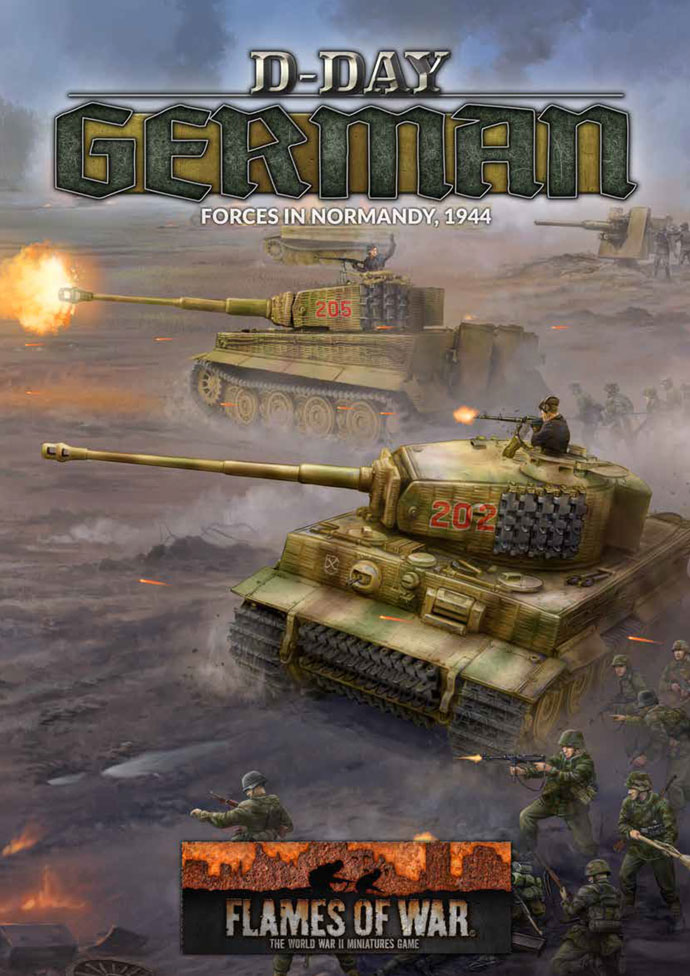 |
German Infanterie Divisions in the Normandy Campaign
by Steve Bernich
The Landser of the regular German infanterie divisions bore the brunt of the Allied materiel superiority during the Normandy campaign, from the landings on D-Day to the desperate retreat in mid-August at St. Lambert sur Dives. On an individual basis, it was believed that the German soldier was more than a match for his American and British counterparts, who either lacked the force of will or the physical skill to take on the tasks before them. However, this belief mattered little as the German infantry forces found themselves between the rock of the Allied invasion force growing in power and the hard place of Hitler’s almost daily ‘no retreat’ orders. The German “landser were experiencing a Materialschlact – a battle of attrition – on an unparalleled scale.” (Hargreaves, page. 76).
|
| The German forces were also plagued with supply problems due to the heavy interference of the Allied air forces, while the Allies had a steady stream of replacement equipment and troops coming from the beachheads. |
| Allied pilots often noted that the roads behind the German defensive lines were usually open, whereas the lines behind the invasion forces were almost choked with a supply trucks heading forwards. Against this, the Landser of the German army could only do so much. They would rarely receive as much attention as the favoured Panzertruppen, yet the infanterie divisions were continually tasked with holding back the tide of the Allied invasion forces. The Allies seldom ceased their artillery bombardments and air harassment, much less actual offensive operations. One could say that the deck was stacked against the German infantryman and yet, throughout the war, the German soldier upheld himself in most cases with the highest degree of professionalism and heroism in front of staggering odds. |
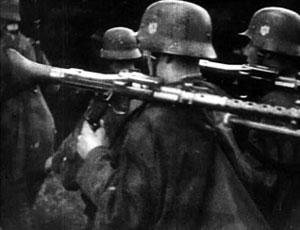 |
|
All of the following German infantry divisions can be represented by either a Festungskompanie (page 26), a Grenadierkompanie (page 140) in Atlantik Wall. Any additional rules or changes to that status that might arise on an individual basis are be detailed below.
|
 |
77. Infanteriedivision
Originally stationed just north of Rennes and south of Mont St. Michel, the 77. Infanteriedivision was not initially affected by the Allied landings. However, they were immediately ordered into action as part of II Fallschirmjägerkorps and were one of the few divisions to make any progress towards the landing zones on 7 June 1944 from Brittany. They engaged mostly with the American paratroopers dropped in the southern Cotentin region. They were soon engaged helping defend Fortress Cherbourg after being cut off from the south by the American isolation of the Cotentin Peninsula at its base. |
|
The middle of June saw the 77. ID engaged in bitter defensive battles as the Cherbourg defenders drew back towards the city itself under the constant pressure of the advancing American 4th, 9th and 79th infantry divisions. Major General Stegman was killed by an Allied air attack on 18 June and was replaced by Colonel Bacherer, who thought better than to engage in the final defence of the city. The following day about 1,400 men of the 77. ID struck southwards through American lines in an attempt to escape the encirclement. This number comprised roughly half the division’s remaining strength, and it is very likely that they were the last German soldiers to leave the Cotentin peninsula under their own command.
The 77. ID’s final actions saw constant contact with the enemy in and around the border between the Normandy and Brittany regions of France. In early August they made an attempt to seize the Pontaubault Bridge, near their original start point due south of Avranches, in an attempt to halt the U.S. advance into Brittany, but they arrived too late. The division surrendered en masse at St. Malo on 15 August.
For 77. Infanteriedivision use the Beach Defence Grenadier Company (Page 18) from D-Day: German and the77th Infantry Division 8.8cm Tank-hunter command card.
|
Order of Battle
77. Infanteriedivision
Commanding Officer –
Major General Stegman, Colonel Bacherer
1049. Grenadier Regiment
1050. Grenadier Regiment
177. Artillerie Regiment
77. Füsilier Bataillon
177. Panzerjäger Abteilung
177. Pionier Bataillon
177. Nachrichten Abteilung
|
85. Infanteriedivision
The 85. Infanteriedivision arrived on the Normandy scene later in the campaign, not materializing until August, just in time to relieve the 12. SS-Panzerdivision (Hitlerjugend) on the Caen-Falaise highway on 11 August. The 12. SS had been battered by constant Allied air, artillery and tank attacks and was badly in need of a few days’ rest and refitting. However, the 85. ID was untested and under-strength. They were in no condition to hold a line of defence that was so contested. They got three days of relative peace. |
|
14 August saw the 85. ID under heavy pressure from Allied bomber strikes, as well as the advance of the 1st Polish Armoured division. The fighting was intense and bitter. The tanks of the Poles won the day, literally rolling over the German lines.
By 17 August, after their escape from Falaise, the 85. ID was reduced to one and a half infantry battalions, two field artillery pieces, and miscellaneous support troops, this reduced from a total strength of 6 infantry battalions and two field artillery battalions a month earlier.
The 85. Infanteriedivision later saw action in Operation Market Garden and suffered heavy losses at Aachen. Their final orders came on 4 April 1945 to disband and reform into Division Potsdam for the eventual defence of Berlin.
For 85. Infanteriedivision use the Beach Defence Grenadier Company (Page 18) from D-Day: German.
|
Order of Battle
85. Infanteriedivision
Commanding Officer -
Lieutenant General Kurt Chill
1053. Grenadier Regiment
1054. Grenadier Regiment
185. Artillerie Regiment
85. Füsilier Bataillon
185. Panzerjäger Abteilung
185. Pionier Bataillon
185. Nachrichten Abteilung |
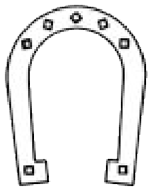 |
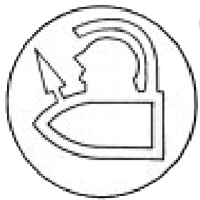 |
89. Infanteriedivision - 'Horseshoe Division'
The 89. Infanteriedivision or the ‘Horseshoe Division’ was another untested division waiting on the western front and were only in Normandy for a few days in mid-July when the opening barrages of Operation Totalize landed amongst them. The combined artillery and air barrage created a fiery glow in the sky according to Kurt Meyer of the 12. SS-Panzerdivision who witnessed the opening salvoes and the end of the 89. ID in Normandy. |
|
They were ‘crushed’ and were taken out of the line. They were unable to put up any resistance after being hammered by a seemingly constant bombardment. For the first 30 minutes of the operation the Canadian armoured fighting vehicles did not encounter any resistance, such was the state of the 89. ID.
After the Normandy campaign, the Horseshoe was restructured, re-supplied and sent to Aachen, where it suffered heavy losses, this time defending the Siegfried Line. By the end of October, the division was a complete wreck. The 89. ID was finally put out of commission defending against the Allied counterattack after the Battle of the Bulge.
For 89. Infanteriedivision use the Beach Defence Grenadier Company (Page 18) from D-Day: German. |
Order of Battle
89. Infanteriedivision
Commanding Officer -
Lieutenant General Conrad-Oskar Heinrichs
1055. Grenadier Regiment
1056. Grenadier Regiment
189. Artillerie Regiment
89. Füsilier Bataillon
189. Panzerjäger Abteilung
189. Pionier Bataillon
189. Nachrichten Abteilung |
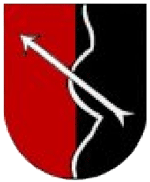 |
91. Infanteriedivision (Luftlande)
Originally an air landing division, the 91. Infanteriedivision was used as general infantry after air operations ceased to be an option during the Normandy campaign. In fact, the last air operations that the Wehrmacht mounted were years earlier. Stationed in the middle of the Cotentin Peninsula, the 91. ID saw immediate action against the United States 82nd and 101st Airborne divisions, which parachuted in during the early morning hours of 6 June 1944. Lieutenant General Willhelm Falley was killed in these early actions against the 82nd and was the first German general killed in Normandy. |
|
After suffering heavily during the mayhem caused by American airborne divisions landing inland, the 91. ID was then attached to the 77. and 243. Infanteriedivisions in an attempt to bolster numbers and consolidate strength for the defence of Fortress Cherbourg.
By 19 June the defenders of Cherbourg, who had already given ground, headed to a bunker system surrounding the city in an attempt to hold out to the last man. Resistance under General von Schlieben (commanding officer of the 708. Infanteriedivision, also in Cherbourg) lasted until 27 June, when the final remnants of defenders in the city either surrendered or were wiped out.
|
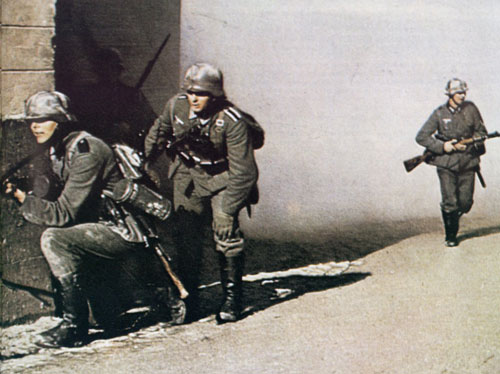 |
|
Von Schlieben became a hero of the Reich for the bloodbath he created. The Nazis used the defence of Cherbourg for propaganda, to show the heroism of the troops on the front lines. The fall of Cherbourg would also mark the first real American victory and German defeat in the Normandy campaign.
Most soldiers of the 91. ID were either captured or killed at Cherbourg, although enough escaped that the remnants would be reorganized for the defence in the Eifel against Patton at Rennes in August. In November the 344. Volksgrenadierdivision absorbed them to replace lost troops.
For 91. Infanteriedivision use the Beach Defence Grenadier Company (Page 18) from D-Day: German.
|
Order of Battle
91 Infanteriedivision (Air landing)
Commanding Officer –
Lieutenant General Wilhelm Falley (KIA 6 June), Colonel Klosterkemper (10 June), Colonel Eugene Konig
1057. Grenadier Regiment
1058. Grenadier Regiment
191. Mountain Artillerie Regiment
91. Füsilier Bataillon
191. Panzerjäger Abteilung
191. Pionier Bataillon
191. Nachrichten Abteilung
191. Flak Kompanie
Division Support Options
• Fallschirmjager Platoon
• Schwere Panzer Platoon
• Panzer Platoon
• Radio-control Tank Platoon
• Assault Gun Platoon
• Tank-hunter Platoon
• Jagdpanther Platoon
• Rocket Launcher Battery
|
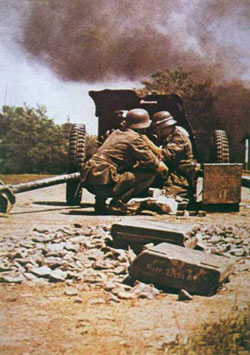 |
243. Infanteriedivision
The 243. Infanteriedivision was given the defence of the west coast of the Cotentin Peninsula, but was rated ‘Kampfwert V’ or unsuitable for combat. However, they were stationed at posts in the hope that they would not have to be used, in a unrealistic use of manpower that Hitler seemed so fond of, all the while ignoring those who called for more realistic measures. Of the three grenadier regiments in the 243. ID, one was using horse drawn wagons to move their heavy equipment (which was not unusual for the Heer army at this point in the war); the second regiment was limited to bicycle transport; and only the third was motorised in any meaningful capacity. The division was under constant attack after D-Day from air and naval bombardment. On 7 June divisional commander Lieutenant General Heinz Hellmich was killed and Colonel Bernhard Klosterkemper, formerly of the 91. Infanteriedivision, was handed the reins.
The 243. ID was among the defenders of Fortress Cherbourg and suffered the same fate as the rest. Those few that escaped the destruction were redeployed at St. Lo, despite the division being officially listed as ‘destroyed’ by SS General Paul Hausser (commander of the German 7th Army). In spite of this label, they defended against the American push in the bocage territory and were combined with the 77. ID in an attempt to keep a coherent force.
|
|
The 243. ID was disbanded on 12 September in order to reinforce other divisions with its remaining men.
For 243. Infanteriedivision use the Beach Defence Grenadier Company (Page 18) from D-Day: German.
Order of Battle
243. Infanteriedivision
Commanding Officer – Lieutenant General Heinz Hellmich (KIA June 7), Colonel Bernhard Klosterkemper
920. Grenadier Regiment
921. Grenadier Regiment
922. Grenadier Regiment
243. Artillerie Regiment
243. Füsilier Bataillon
243. Panzerjäger Abteilung
243. Pionier Bataillon
243. Nachrichten Abteilung
|
|
271. Infanteriedivision
The 271. Infanteriedivision was stationed on the Mediterranean coast on 6 June, but was immediately sent north to join the fray in the Normandy region. They were still considered under-strength when they were sent to replace the battered 10. SS-Panzerdivision near Caen on 17 July, facing the British and Canadians.
They arrived just in time for Operation Totalize, during which the 271. ID fought well in spite of being considered ‘untrained’. One in every 12 of its 12,500 men was a volunteer from the East, typically Poles or Russians, who preferred fighting instead of a prison camp.
|
|
Lieutenant General Paul Danhauser led the 271. ID out of the Falaise pocket with enough strength to join the 576. Volksgrenadierdivision and operate under their command in September. The 576. Volksgrenadierdivision, now at full strength, saw further action in Budapest, in Hungary, and ended the war east of Prague, where the advancing Red Army destroyed most of the division.
For 271. Infanteriedivision use the Beach Defence Grenadier Company (Page 18) from D-Day: German. |
Order of Battle
271. Infanteriedivision
Commanding Officer – Lieutenant General Paul Danhauser
977. Grenadier Regiment
978. Grenadier Regiment
979. Grenadier Regiment
271. Artillerie Regiment
271. Füsilier Bataillon
271. Panzerjäger Abteilung
271. Pionier Bataillon
271. Nachrichten Abteilung |
 |
272. Infanteriedivision
On D-Day, the 272. Infanteriedivision was in southern France training near the Pyrenees Mountains, along border with Spain. In spite of their under-strength status, they were sent to Normandy in one of the many stopgap measures taken by OKW. Replacing the spent 1. and 12. SS-Panzerdivisions on the frontline on 13 July, the 272. ID suffered heavily in the ensuing action in and around Caen. |
|
After escaping at Falaise, they were sent back to Germany for rest, restructuring and refitting, emerging at full strength after having absorbed the 575. Volksgrenadierdivision. The 272. ID headed back west and saw action during Hurtgen Forest, the Bulge, the Roer River Dams battles and defending in the Eifel. By January 1945 they were all but burnt out and were finally destroyed during some of the final actions of the war in April 1945.
For 272. Infanteriedivision use the Beach Defence Grenadier Company (Page 18) from D-Day: German.
|
|
Order of Battle
272. Infanteriedivision
Commanding Officer – Lieutenant General Friedrich August Schack
980. Grenadier Regiment
981. Grenadier Regiment
982. Grenadier Regiment
272. Artillerie Regiment
272. Füsilier Bataillon
272. Panzerjäger Abteilung
272. Pionier Bataillon
272. Nachrichten Abteilung
|
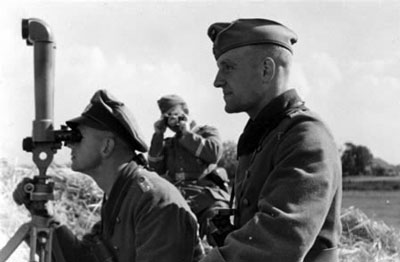 |
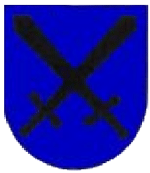 |
275. Infanteriedivision
Held in reserve on the Western front, the 275. Infanteriedivision was in training in Brittany when the Allies landed. After the initial few weeks of invasion bogged down, the 275. ID was sent to replace the 130. Panzer Lehr Panzerdivision in the line to allow it to move to different positions opposite the massing American armoured divisions.
Much like Panzer Lehr, the 275. ID were smashed in the first days of Operation Cobra by the repeated saturation bombing attacks, and never recovered.
|
|
They suffered under heavy offensives for the next month. German 78th Army commander Paul Hausser subsequently listed the division as ‘destroyed’ after Falaise.
After Normandy, the 275. ID fought at Aachen and then was taken out of the line in October, where it absorbed local defensive troops but was still listed as under strength. Regardless, it took part in the fighting in the Hurtgen Forest, where it was virtually destroyed. Elements of the 275. ID still existed in various capacities until late April 1945, when they surrender at Guben, near Berlin. The 275. ID was never really able to mount any major offensive operations as it was always on the receiving end of superior Allied firepower.
For 275. Infanteriedivision use the Beach Defence Grenadier Company (Page 18) from D-Day: German and the 275th Infantry Division 10.5cm Howitzer command card. |
Order of Battle
275. Infanteriedivision
Commanding Officer - Lieutenant General Hans Schmidt
983. Grenadier Regiment
984. Grenadier Regiment
985. Grenadier Regiment
275. Artillerie Regiment
275. Füsilier Bataillon
275. Panzerjäger Abteilung
275. Pionier Bataillon
275. Nachrichten Abteilung |
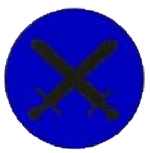 |
276. Infanteriedivision
The 276. Infanteriedivision was nearly destroyed in the Normandy campaign, in which it was involved from June through August to the eventual escape at Falaise. Their remnants were reorganised as a Volksgrenadier division, which then saw action during the Battle of the Bulge, the Rhine River crossings, and Remagen Bridge, only to be smashed and destroyed in March 1945.
For 276. Infanteriedivision use the Beach Defence Grenadier Company (Page 18) from D-Day: German. |
Order of Battle
276. Infanteriedivision
Commanding Officer - Lieutenant General Kurt Badinski
986. Grenadier Regiment
987. Grenadier Regiment
988. Grenadier Regiment
276. Artillerie Regiment
276. Füsilier Bataillon
276. Panzerjäger Abteilung
276. Pionier Bataillon
276. Nachrichten Abteilung |
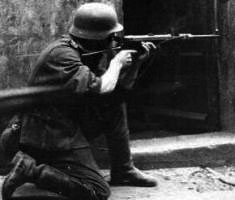 |
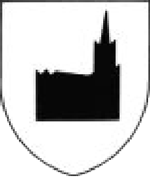 |
277. Infanteriedivision
The 277. Infanteriedivision saw action in the Normandy campaign in mid-June, when they replaced the battered 9. SS-Panzerdivision in the front line opposite the British. They stood up well against the British advance in and around Caen on 8 and 9 July, but were pushed back by the eventual advances of Goodwood and subsequent operations. |
Order of Battle
277. Infanteriedivision
Commanding Officer -
Major General Wilhelm Viebig |
|
They were caught in the Falaise pocket and suffered heavily, starting the battle with only 2,500 troops. By mid-August they were left with only 1,000 of those actual combat troops.
After a brief reorganisation period, they were sent back to the front lines, this time to the Eastern Front in Budapest, Hungary as a Volksgrenadier Division. They were brought back west to fight in the Ardennes Campaign, where they were overrun and subsequently disbanded. Any remaining troops under German command were sent to reinforce other divisions as replacements.
For 277. Infanteriedivision use the Beach Defence Grenadier Company (Page 18) from D-Day: German.
|
989. Grenadier Regiment
990. Grenadier Regiment
991. Grenadier Regiment
277. Artillerie Regiment
277. Füsilier Bataillon
277. Panzerjäger Abteilung
277. Pionier Bataillon
277. Nachrichten Abteilung |
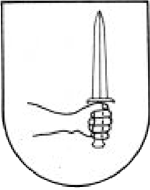 |
326. Infanteriedivision
The 326. Infanteriedivision first saw action replacing 2. Panzerdivision near Caumont on 22 July. The British soon overran the inexperienced 326. Infanteriedivision later in the week. Soldiers of the 326. ID were among those who managed to break out at Falaise, but the unit itself was destroyed. They were rebuilt as a Volksgrenadier unit and fought again at the Roer River, the Battle of the Bulge, and in the Eifel, only to finally surrender to the Americans in the Ruhr pocket.
For the 326. Infanteriedivision use a Grenadierkompanie (Page 140) from Atlantik Wall. |
Order of Battle
326. Infanteriedivision
Commanding Officer - Colonel Kertsch
751. Grenadier Regiment
752. Grenadier Regiment
753. Grenadier Regiment
326. Artillerie Regiment
326. Bewegliches Bataillon
326. Panzerjäger Abteilung
326. Pionier Bataillon
326. Nachrichten Abteilung |
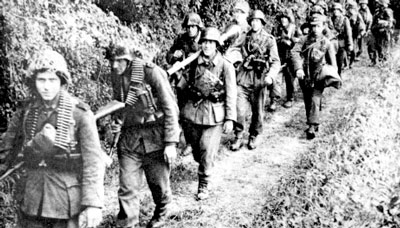 |
 |
331. Infanteriedivision
One of the few veteran infantry divisions in Normandy at the time of the invasion, the 331. ID had gained experience on the Eastern Front. But unfortunately, by June 1944 that experience had been somewhat diluted by the influx of replacement troops and new recruits during its reforming in the Spring of 1944. |
|
Originally stationed near Lille, in the Pas de Calais region, the 331. ID immediately moved towards the Normandy region once the invasion began.
Seeing action throughout the campaign, the 331. ID was one of the first to break out of the Falaise pocket, and regrouped to defend Paris. However, under pressure from the U.S. 1st Army, the division ‘melted away’ under the heavy artillery and armoured onslaught. Survivors that were rounded up were used as replacements for other divisions, and the 331. ID ceased to exist by September 1944.
For 331. Infanteriedivision use the Beach Defence Grenadier Company (Page 18) from D-Day: German. |
Order of Battle
331. Infanteriedivision
Commanding Officer -
Major General Rheim
557. Grenadier Regiment
558. Grenadier Regiment
559. Grenadier Regiment
331. Artillerie Regiment
331. Reconnaissance Kompanie
331. Panzerjäger Abteilung
331. Pionier Bataillon
331. Nachrichten Abteilung |
346. Infanteriedivision
The division was stationed just north of Le Havre on D-Day. In the following four days of battle the 346. Infanteriedivision lost half of its strength, from aerial and artillery attacks in support of the British at Caen. Infantry companies were down to 35-60 men each by 13 June, and a month later the division would report only 6 functioning anti-tank weapons for the entire division. Severely reduced in strength, the 346. ID were pulled out of the line and placed, unfortunately, in a perfect jump-off for the breakout at Falaise, where they incured even more losses.
After retreating across France and Belgium, the 346. ID were finally rested and refitted in Holland for the rest of the war. They eventually surrendered to the British at Arnhem in May 1945. |
Order of Battle
346. Infanteriedivision
Commanding Officer - Major General Walter Steinmuller
857. Grenadier Regiment
858. Grenadier Regiment
1018. Grenadier Regiment
346. Artillerie Regiment
346. Füsilier Bataillon
346. Panzerjäger Abteilung
346. Pionier Bataillon
346. Nachrichten Abteilung |
|
For 346. Infanteriedivision use the Beach Defence Grenadier Company (Page 18) from D-Day: German.
If a player wishes to field the first battalion of the 857. Grenadier Regiment, which was composed of Osttruppen, or foreign volunteers, consisting of Russian, Poles, Romanians, Italians, Hungarians and Ukrainians. In truth, many of these were veterans who chose to fight for the Germans as opposed to rotting away in prison camps, but they usually became less dependable in battle once the Allied armies displayed their awesome firepower.
For a Ostruppen battalion of the 346. Infanteriedivision use the 716th Infantry Battalion Ost Battalion command card.
|
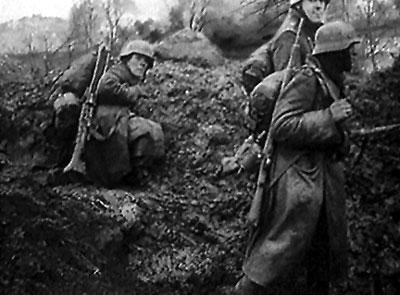 |
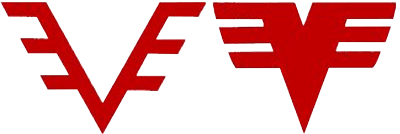 |
353. Infanteriedivision
The 353. Infanteriedivision was originally held in reserve to the 7th Army under General Paul Hausser. |
|
The division was rated at Kampfwert II (limited offensive capability), which was actually fairly high compared to some of the other infantry divisions in the region. As a reserve force, the 353. ID was stationed in and around Marigny, where the Allied advance would not contact them until the beginning of Operation Cobra. Right from the beginning the 353. ID were victimised by Allied airpower, but were able to counterattack the Allied advance alongside the 2. SS-Panzerdivision.
August saw the 353. ID in constant holding actions designed to slow the advance of Cobra. They had lost half their strength by the time of the breakout at Falaise. The 353. ID saw little rest after August of 1944, as it was reorganised as a Volksgrenadierdivision and defended the Siegfried Line, the Roer River Dams, and finally Cologne. In each action, it suffered heavy losses and the division’s remnants finally surrendered at the Ruhr pocket.
For use the Beach Defence Grenadier Company (Page 18) from D-Day: German.
|
Order of Battle
353. Infanteriedivision
Commanding Officer - Lieutenant General Erich Muller
941. Grenadier Regiment
942. Grenadier Regiment
943. Grenadier Regiment
353. Artillerie Regiment
353. Füsilier Bataillon
353. Panzerjäger Abteilung
353. Pionier Bataillon
353. Nachrichten Abteilung |
708. Infanteriedivision (Static)
The 708. Infanteriedivision was one of the many static or fortress divisions that the Third Reich had manning the Atlantic Wall. |
|
In spite of the impressive name, most of these static divisions were poor quality and were under-strength.
The 708. ID was mostly destroyed in their actions against the French 2nd Armoured division, which overran their positions in mid-August near Falaise. Remnants of the division were sent to Slovakia for rebuilding, appropriately as a Volksgrenadierdivision. They were then sent back to the western front, suffered heavy losses defending Alsace, and were destroyed at the Colmar bridgehead on 3 February 1945.
For 708. Infanteriedivision use the Beach Defence Grenadier Company (Page 18) from D-Day: German
|
Order of Battle
708. Infanteriedivision
Commanding Officer - Major General Edgar Arndt
728. Grenadier Regiment
748. Grenadier Regiment
1708. Artillerie Regiment
708. Füsilier Bataillon
708. Panzerjäger Kompanie
708. Pionier Bataillon
708. Sanitäts Abteilung (Medical Company)
708. Flak Kompanie |
709. Infanteriedivision (Static)
The 709. Infanteriedivision, much like the other Fortress divisions, was intended to do little more than defend the coast. Stationed on the east coast of the Cotentin Peninsula, they were fairly typical of the other second-rate divisions, having as many as one in five troops being a ‘volunteer’ from the initial success on the Eastern Front. In fact, it was composed of men whose average age was in the mid-thirties, whereas the average American or British soldier was much younger, mid to early 20s, which may have had something to do with the reputation of Osttruppen. Typically unreliable, “they fell to pieces completely. They held out for quite awhile, but when things became critical, they took to their heels too,” according to Oberst Walter Kohn, who witnessed their actions. According to commanding officer Karl Wilhelm von Schlieben, “We are asking rather a lot if we expect Russians to fight in France for Germany against Americans.” In fact, most of these men had never seen battle and were not trained, in spite of the division being created in 1941. |
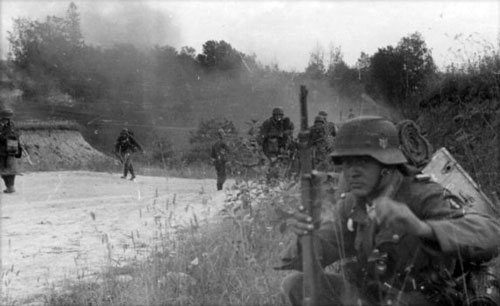 |
The problems of the 709. ID hardly ended with manpower issues, but also included the poor quality of defensive fortifications. In spite of the legend of the ‘Atlantic Wall’ as a constant concrete fortress, most of the fortifications in the 709. ID’s region were either second rate or unfinished, in some cases with only a few machine-gun nests to cover miles of coastline. In addition, at the time of the invasion, commanding officer Major General Karl Wilhelm von Schlieben was away at war games in Rennes, practising for an Allied invasion. |
|
Von Schlieben rushed back to his command and was crucial in setting up defensive operations with the 709. ID and the surrounding divisions to hold the city of Cherbourg ‘at all costs’. By 19 June the Allied advance had pushed the German defenders from the countryside into the city itself. Urban fighting and almost total destruction characterised the next few weeks until resistance under von Schlieben finally ceased on 27 June. The city itself became a wasteland of rubble, and those who entered it were met with the vacant stares of those who remained behind. According to the Nazis, this was a great German victory, despite the loss of ground, due to the bloody example that was set. Von Schlieben himself would become a hero of the Reich.
|
|
Despite the ages of the men in the 709. ID, the division fought very well until the collapse of Cherbourg under intense and constant aerial, artillery and naval bombardment by the Allied forces. With little manpower left due to casualties, the remaining defenders of Cherbourg surrendered to the Americans. The division itself was officially dissolved 25 July 1944.
For 709. Infanteriedivision use the Beach Defence Grenadier Company (Page 18) from D-Day: German.
However, if a player wishes to field one of the Osttruppen battalions in either the 729. or 739. Grenadier Regiments use the 716th Infantry Battalion Ost Battalion command card.
|
Order of Battle
709. Infanterie Division
Commanding Officer - Major General Karl Wilhem von Schlieben
729. Grenadier Regiment
739. Grenadier Regiment
919. Grenadier Regiment
709. Artillerie Regiment
709. Panzerjäger Abteilung
709. Pionier Bataillon
709. Nachrichten Abteilung
709. Sanitäts Abteilung (Medical Company) |
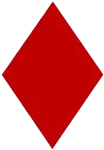 |
711. Infanteriedivision (Static)
The fourth of the Fortress divisions in the Normandy region (708, 709, 711 and 716), the 711. Infanteriedivision was another division that was intended to do little but hold the coast. Stationed at Cabourg, just northeast of Caen, they suffered heavy casualties while defending against the British at Sword Beach. Their casualties were so heavy that they were pulled out of the line to rebuild in Holland. The 711. ID was then transferred to the Eastern Front, where they surrendered to the Red Army in May 1945. |
|
For 711. Infanteriedivision use the Beach Defence Grenadier Company (Page 18) from D-Day: German.
Resources:
www.feldgrau.com
www.axishistory.com
www.germanwarmachine.com
http://web.telia.com/~u18313395/normandy/gerob/gerob.html
www.onwar.com
Hargreaves, Richard, The Germans in Normandy.
Mitcham, Samuel, German Order of Battle, Volume One.
Mitcham, Samuel, German Order of Battle, Volume Two.
Zetterling, Niklas, Normandy 1944.
|
Order of Battle
711. Infanteriedivision
Commanding Officer - Generalleutnant Josef Reichert
731. Grenadier Regiment
744. Grenadier Regiment
763. Grenadier Regiment
651. Artillerie Regiment
711. Füsilier Bataillon
711. Panzerjäger Abteilung
711. Pionier Bataillon
711. Nachrichten Abteilung
711. Sanitäts Abteilung (Medical Group) |
Last Updated On Monday, May 11, 2020 by Wayne at Battlefront
|
|
|